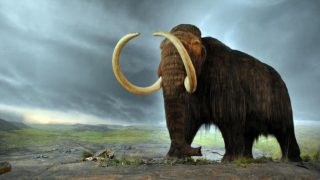Scientists Given $15 Million to “De-Extinct” Wooly Mammoths

by Julia Pierce, Worthy News Correspondent
(Worthy News) – According to a report by CNN, genetic scientists have been interested in bringing back the wooly mammoth for many years, and with a $15 million investment in bioscience and genetics company, Colossal, it looks as though they’ll be able to succeed within the next 6 years.
Evidently, the goal of bringing back the wooly mammoth isn’t just about seeing if it could be done, but also to have a positive impact on the restoration of the Arctic tundra ecosystem. These “mammoths” would not be cloned with prehistoric mammoth DNA, but rather would be genetically engineered an elephant-mammoth hybrid that would look exactly like the original mammoth, minus the tusks.
It is believed that wooly mammoths and other large animals once helped to preserve the Arctic tundra ecosystem by packing down permafrost under their heavyweight, and by knocking down trees and keeping grass from thriving underfoot.
George Church, one of the co-founders of Colossal, and Harvard Medical School geneticist, says that at least 50 changes to the genetic code will be required in order to make the elephant-mammoth hybrid with all the desired characteristics, such as a 10-centimeter layer of insulating fat, five kinds of shaggy hair, including some that grow to a meter long, and smaller ears than their Asian elephant cousins, to help them thrive in the cold, harsh climate. They also would not have tusks so as not to attract ivory poachers.
Although the goal and the science are both fascinating, the project is certainly overflowing with ethical conundrums. For instance, Church says they may “grow” the hybrid fetus in an artificial womb, or they may implant it into an Asian elephant.
Professor Love Dalen, of the Centre for Paleogenetics in Stockholm, expresses concern that implanting the elephant-mammoth hybrid into an Asian elephant would be equal to implanting a chimpanzee fetus into a human. The moral and ethical implications cannot be overlooked. Dalen also voices concern over the fact that very little is actually known about the genes that make up the prehistoric wooly mammoth, and furthermore, there is little reason to actually believe that herds of genetically modified hybrids would truly have a positive impact on the ecosystem.
All one has to do is remember the science fiction dilemmas and disasters in every Jurassic Park movie to imagine what other ethical and moral issues could arise from geneticists attempting to re-create the wooly mammoth or any other animal that is already extinct.
If you are interested in articles produced by Worthy News, please check out our FREE sydication service available to churches or online Christian ministries. To find out more, visit Worthy Plugins.
